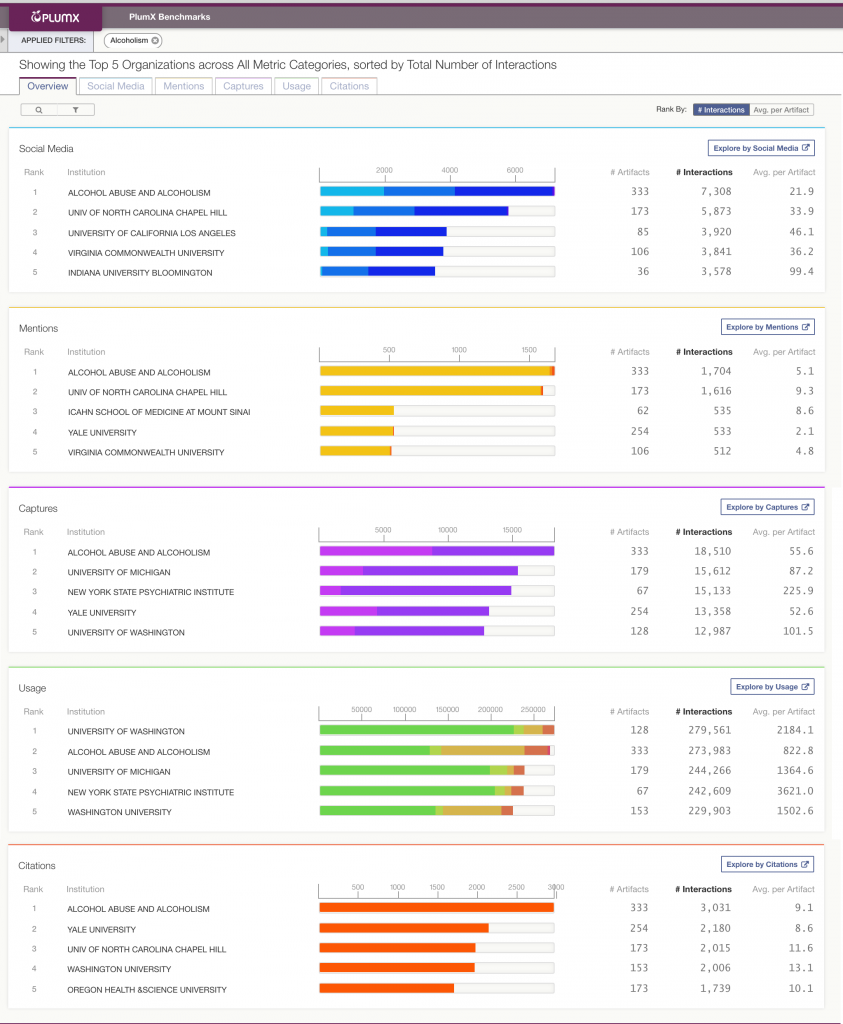PlumX Benchmarks: Overview Makes it Easier to See How You Compare Now
How do you measure and benchmark your institution’s research performance?
Traditionally, many academic benchmarking tools use citation analysis to measure and compare institutions’ research. However, citations are lagging indicators of impact, and they do not do some disciplines in the social sciences and humanities justice.
In August 2015, Plum Analytics launched PlumX Benchmarks to allow institutions to benchmark and measure themselves against their peers using a comprehensive set of metrics: leading indicators like usage and captures, and important attention metrics for social media and online conversations. Using Plum’s five categories of metrics (Usage, Captures, Mentions, Social Media, Citations) PlumX Benchmarks lets you compare institutional academic output.
Today, we launched a new Overview page that summarizes all five categories in one view.
PlumX Benchmarks helps answer questions like:
- In your core areas of research, how do you compare to other institutions by these measures?
- Are you well-placed to compete for grants in this area?
- Who are the leaders in the field?
- Where are they publishing and discussing their research?
As an example, let’s consider all institutions that conduct NIH-funded research in Alcoholism. PlumX Benchmarks ranks these institutions by each of the metric categories. You can explore category leaders’ output, per institution or per grant.
The following charts are based on all alcoholism research funded by the NIH from 2011-2015.

Results can be filtered by NIH spending category, funding institution or geography. Drill into any institution, grant or spending category to find the details of every related academic output, from journal articles to conference proceedings to videos, including details about the authors, publication sites and more.
Stay tuned for more examples of PlumX Benchmarks in action.